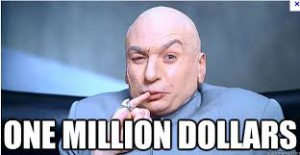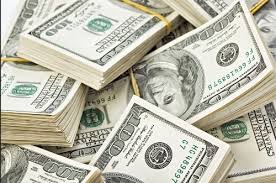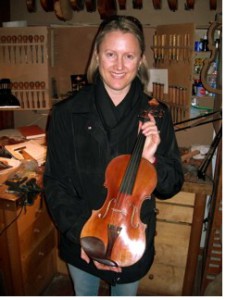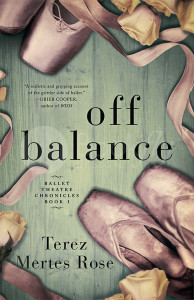In my second year of playing the violin, back in 2006, I decided my $200 starter violin, initially a rental, had served its purpose, and it was time to invest in a quality advanced beginner violin. My budget was $2000. The search took five months as I sampled over forty violins, in San Francisco, Santa Cruz, Berkeley, San Jose. One violin, midway into the search, called my name: a late 19th century Stainer copy, Czech, battered and well-used in a way I found so intriguing. But, at $2200.00, it was over budget and, further, would need a little repair work, sooner than later. A second candidate a month later, an early 20th century German violin for $1800, looked to be in better condition. But when I went back to the shop to reassess that violin, the store clerk brought out a contemporary Romanian violin. “Give this one a try, as well,” he said.
I looked at the price tag. $850. I regarded the clerk quizzically. “That’s way under my budget,” I told him. “And I’m looking for something more… special.”
“Trust me,” he said.
I did. Damn.
My teacher and I were both thrilled with the young Romanian’s quality sound, and could not tell the difference between it and the other two contenders I’d brought in for The Big Showdown. (In the violin world, they’ll let you borrow and test the violins you’re considering buying.) Factoring in its repair-free condition, the Romanian came out the winner. And only $850; an amazing bargain, particularly once I’d let go of my attachment to owning an older violin. You pay $$ for the privilege. $1350, in this scenario.
Post-purchase, I showed my new acquisition, now nestled in its $250 case, to friends and associates, watching their jaws drop at the mention of the bargain price. But the surprise was now on me: what I’d considered to be a bargain was, to many of them, a staggering cost. They’d had no idea violins cost so much. (Case in point: my own $200 starter violin. And the bargains found on eBay and at Amazon, where $43 will get you the case, bow and rosin, to boot. But, um… buyer beware.
I also noticed this omigod, I’d had no idea reaction to stringed instrument prices when I discussed my novel, Off Balance, with friends and readers. Off Balance features a violinist as a secondary character and, with it, a glimpse of the violin world at the soloist level. Which means expensive violins, wealthy investors who will buy and lend out top quality instruments, and the sacrifice required for a soloist to own their instrument (decision time: buy a house or buy a Stradivarius).
Let’s talk about the makers of these million-dollar violins for a moment. Antonio Stradivari (1644 – 1737) wasn’t the only one creating masterpieces, although his is the name most people will recognize. The other big, big name you should know — and some will argue his violins surpassed even those of Stradivari — is Giuseppe Guarneri (1698–1744), also known as Joseph Guarnerius del Gesù. ( The term “del Gesù,” meaning “of Jesus,” comes from his labels, which always incorporated the characters I.H.S. and a Roman cross.) Other top names would include Amati, Guadagnini, Maggini, Ruggieri, Gagliano, Stainer, J.B. Vuillaume.
What instruments are the top violinists using? Here’s an article that answers that question wonderfully. Meanwhile, here’s me, back in November 2007, holding a $600,000.00 Guadagnini (1748) from luthier Claude Lebet’s shop in Rome. It felt way cool in my hands. But even this $$$ instrument doesn’t come close to being considered a top-dollar violin.
Just how expensive do expensive violins get? Brace yourself. (Prices, based on auction sales, were gleaned from articles around the Internet and might have changed since the article’s publication.)
- The Vieuxtemps Guarneri*, 1741, $16- $18,000,000
- The Messiah Strad, 1716, (almost never been played, on permanent display at the Ashmolean Museum in Oxford, valued by some at $20,000,000, but, really, priceless)
- The Lady Tennant Strad, 1699, $2,032,000
- The Hammer Strad, 1707, $3,544,000
- The Molitor Strad, 1697, $3,600,000
- Il Cannone Guarnerius, 1743, (Niccolo Paganini’s violin and again, not for sale, but stored in an Italian palace vault. Insured for $4 million, but is surely worth 4x that now. Again, it’s priceless, in the end.)
- The Lord Wilton Guarneri Del Gesù, 1742, $6 million
- The Mary Portman Guarneri, 1735, $10 million
- Ex-Kochanski Guarneri, 1741, $10 million
- Carrodus Guarneri, 1743, $10 million
- The Lady Blunt Strad, 1721, $15,900,000
*The terms “Guarnerius” and “Guarneri del Gesù” are used interchangeably when these violins are mentioned in the media, although there were luthiers within the Guarneri family who did not produce “del Gesù” violins.
And these are just a few, from among the many violins priced over $1 million.
I know, right?
“Why are they so expensive?” people always ask. Well, because they’re little works of art, hand-crafted with the highest quality wood and varnish, and there are a limited number of the old ones. Stradivari created 1100 violins, 650 of which are accounted for today. The violins from his “golden period,” from 1700 through 1725 are among the most valuable, with extraordinary acoustic properties in addition to peerless workmanship.
“Why the price leap in the past thirty years?” other people ask. Well, when demand is high, that’s what happens. Here’s a link to a great article that not only discusses the most expensive violins today, but illustrates that dramatic price jump, especially in recent years. Prior to 2005, the prices that made people gasp were along the lines of $2.03 million, the record-breaking price of The Lady Tennant 1699 Stradivarius sale. Now The Lady has been left in the dust, behind a half dozen violins that have cleared the $5 million mark, then the $10 million, and in 2013, $16-18 million (the Vieuxtemps Guarneri, bought and loaned out to violinist Anne Akiko Meyers, for life, by an anonymous donor). What a great loan, huh? Except, imagine the stress of leaving your house with that sort of liability, making your way through daily life, worrying about its welfare. Ask violinist Min-Jin Kym, who set down the case holding her $2 million Strad next to her feet in a sandwich shop in London’s Euston Station, and in the blink of an eye, someone had stolen it. Read that story here. Ask Frank Almond, who was shot by a stun gun in a parking lot at night, post performance, and while he lay on the ground, dazed and paralyzed, the thieves grabbed the violin (a 1715 Strad, valued at $5 million) and ran. (Story here). Or David Garrett, who tripped on slippery steps, post-concert, fell and crushed his 1770 Guadagnini (Roughly $1.6 million). Ouch. You gotta read this story. Warning: if you’re a violinist, it might give you bad dreams. For life.
If you’re looking to buy a violin yourself, here are some tips to consider.
On Thursday, Aug 6th, a thrilling story came out; another a million dollar Strad retrieved. Renown NPR correspondent Nina Totenberg not only wrote and reported the story, she experienced it firsthand, through her father, Roman Totenberg, a violin virtuoso, whose Strad was stolen 35 years ago. Read the story here. (It’s SUCH a great story, and so well delivered, but what do you expect, from the wonderfully eloquent Nina Totenberg?)
Speaking of stories, why don’t I finish off the subject with an excerpt from my recently released novel, Off Balance, that ties right in with the theme of “the world of million-dollar violins.” The scene is a posh party. Alice, dancer-turned-administrator, is there with her boss, Gil, to try to woo performing-arts philanthropist Andy Redgrave into a $250K grant for the West Coast Ballet Theatre. Andy has invited them to a private gathering in his home, celebrating the recent acquisition of an 1872 Renoir painting and a 1684 Stradivarius cello, to be played by a trio of internationally acclaimed soloists (one of whom is Alice’s violinist friend, Montserrat). Gil, contrary to the plan, has brought along Lana, a love interest and a new rising-star dancer to the company, which throws Alice off balance in more ways than one.
The party took place in Hillsborough, tucked into the foothills of the coastal mountain range paralleling Highway 280. Andy Redgrave’s home was impressive, more of a mansion than a house, the white sandstone exterior making it look like an Italian villa. A team of valet parking attendants hurried to open Gil’s car doors and take his keys. At the massive carved-oak front door a sharply attractive woman with a professional demeanor greeted them, checking Gil and Alice’s names off the invitation list before directing them into the two-story entryway. The last of the evening’s light glowed through the windows while strategically placed track lighting illuminated the high ceilings and the rest of the room.
“Showtime,” Gil murmured to Alice, who nodded. Lana nervously chewed her lower lip.
“Maybe this dress was the right call,” she said to Alice.
“It was.”
She’d harbored anxiety that Lana, even with the dress, would stand out as a liability, but that wasn’t proving to be the case. Lana comported herself well, moving through the entryway like the graceful dancer she was, taking in the statues, the marble floors, the staircase’s elaborate carved molding in a sweetly nervous, deferential manner. Gil excused himself to go hunt down Andy, and Lana stayed close to Alice as they entered the living room. When an announcement circulated that the musicians were going to perform shortly, they made their way to a salon where several dozen padded folding chairs had been set up to face a platform in the front of the room.
Alice claimed three seats but as she was searching around for Gil, she turned to see, instead, Andy Redgrave.
“Hello, Alice,” he said in that cool way of his. “Glad you could make it. Gil here, as well?”
“Actually, he’s looking for you.”
“Well. Here I am.”
Tonight Andy was dressed more casually, in a pin-striped button-down oxford shirt and navy trousers, simple elegance that probably had cost a thousand dollars. He was more tanned than when Alice had last seen him; probably a day out on the yacht. The tan highlighted his blond hair and pale blue eyes. He looked handsome and all-powerful, like an Old Testament angel tossed down to earth, thrown into contemporary clothes and told to “act mortal but not too much.”
She introduced Andy to Lana. “Lana’s a soloist with the company,” Alice added as they shook hands.
Andy turned back to regard Alice in amusement. “Do you always bring your product with you on a sales pitch?”
Alice assumed a breezy confidence she didn’t feel. “Only when they’ll agree to climb into my briefcase. But this is pleasure tonight, not business. Lana’s, um, my friend.”
“Well, I hope you ladies enjoy the performance. Alice, I know you will. This is going to be the highlight of your evening, I think you mentioned.”
This time she was prepared. “Oh, no, Andy. The highlight will be when you grace us with more of your presence.”
He smiled. “Gil’s been coaching you.”
He left to greet another guest. Lana and Alice settled into seats, Alice glancing around anxiously until Gil reappeared.
“Where did you go for so long?” Alice hissed as he took the seat next to Lana.
“I told you. I was looking for Andy.”
“He was here. Right here.”
“So. You chatted?”
“Of course.”
“And you said Lana was your friend?”
“Yes.”
She was somewhat heartened by the fact that he looked worried. He would be taking tonight seriously, after all, in spite of Lana’s presence. Not until the track lights dimmed and the three musicians strode out to the platform, however, did she begin to relax.
Applause broke out, particularly at the sight of Matthew.
“Hey,” Lana whispered as the musicians arranged their music on their stands. “That looks like the guy from the American Express commercial. The musician they did a documentary on last year.”
“That’s because it’s him,” Alice whispered back.
Lana’s eyes widened. “Oh. Oh!”
Alice kept her own eyes focused on the violinist, her friend Montserrat. She was attired in a long black evening dress that added drama and height to her petite frame. Her dark hair was held back with a gold clip, her honey-brown eyes serious as she studied the open page of music before twisting around to murmur something to the pianist. Matthew rose to greet the audience.
Matthew was a warm, boyishly handsome Japanese-American, a concert hall favorite for years. He shared a few details about the Stradivarius, Andy’s new acquisition, that he was playing tonight, which would thereafter be loaned out to a deserving San Francisco-based cellist. He gave a quick rundown on the pieces the trio would be performing. Once he’d finished and returned to his spot, the lights in the back of the room dimmed further. The pianist and Montserrat watched Matthew, who, once his cello was tuned, met their eyes, gave a quick little lift of his chin, and they began.
The first piece was a favorite of Alice’s—one of Saint Saens’ piano trios, a lively, engaging crowd-pleaser from the Romantic era, the melody continually passed around from instrument to instrument. Most of the listeners, Alice sensed, were focused on Matthew and the Stradivarius. The cello’s allure was undeniable. It roared, it purred, it vibrated with intensity and warmth. Alice’s focus, however, remained on her friend and her instrument, the golden antique perfection of her Vuillaume, which could sound sweet and angelic one moment, husky and imploring the next.
This form of artistry was a mystery to Alice, just as Montserrat herself was, even after knowing her for six years. She didn’t like to talk about her past; Alice knew only that she’d had an unconventional youth, shuttled around Europe by actor parents, and that she’d always had to work very hard for her craft, six to eight hours of daily practice, even now. The violin, she’d told Alice, wasn’t something you learned once, and coasted along after that. It was a lifelong, consuming endeavor.
Alice, habituated to creating art through her body, pondered the implications of being a professional musician. You had to take good care of an instrument, true, but you could store it away and relax. You could break your leg and still the instrument would play sweetly. If the instrument were destroyed, you could get a replacement, although Montserrat had told Alice her violin, an 1862 J.B. Vuillaume worth $120,000, was irreplaceable to her.
Following the Saint Saens, the trio performed a lively, syncopated tango, the violin singing in staccato double-stop bursts, almost like an accordion, the cello sounding jazzy and sexy. For the final piece, Matthew played unaccompanied Bach, the famous “Prelude” from his Cello Suite No. 1 in G Major. The sound was rich, deep and pure, the aural equivalent of a fine old Cognac. Even Alice had to admit it was a showstopper. The other listeners, classical music fans or not, were all riveted. Lana gave a little gasp when he’d finished and they were all clapping.
“I’ve never heard anything like that before,” she exclaimed to Alice.
“No, I’m sure you haven’t. Not this close up, certainly.”
“And you said these musicians are friends of yours?”
“Montserrat is, and I know Matthew through her.”
“And he’s so famous. Wow.”
“It couldn’t have been cheap to engage him.”
“How much do you think he makes?”
“For tonight’s performance, probably around 40K.”
“Forty thousand dollars?” Lana’s voice rose to a squeak.
Alice grinned. “Welcome to the major leagues. Imagine what he gets for a big concert.”
Gil leaned over, his eyes glowing. “Alice. Introduce me to him later?”
The double doors leading to the living room were opened. In wafted irresistible smells of roasted meat, garlic in melted butter, baked pastry puffs. The caterers had set up a buffet while the guests had been listening to the music. Alice’s stomach growled, as if on command. Time to indulge, courtesy of Andy Redgrave.
Want to read more? Click HERE!




Here’s an article I enjoyed reading a few months ago, that’s related to the same subject. Check it out for more fun education on million dollar violins! http://consordini.com/the-worlds-most-expensive-violin/
And more, and more! Dang. These are all making for such interesting (and distracting) reading.
http://www.wqxr.org/#!/story/94405-top-five-famous-and-infamous-violins/
My great, great, great, grandparents came to America in 1850 They were of Welsh ancestry, and one of the items they brought was a very old Stradivarius violin, dated 1743. It has all of the “correct” markings, etc. , that would correlate to being the real deal. However, even though the case looks over 200 years old, as do the two bows, one of them exquisitely produced and inlaid in ivory, I will presume for a moment that it is a very, very old reproduction. That being said, what could an instrument such as this possibly be worth? Who, in the Phoenix, az area can I trust to give me an honest evaluation? Thank you!
What a cool story! What you’ve probably got there is a violin that was made faithfully to the style of Stradivarius. Back in the day, luthiers would put a label like that in, not as a forgery, but as an “in the style of” sort of notation. These days, luthiers are constantly getting calls from people who’ve found what they’re sure is a real Stradivarius in their great aunt’s attic. Regrettably, odds are probably 10,000 to 1 (if that) that it’s the real deal. Now, as for how much a replica is worth, I’m going to hazard a guess/estimate of anywhere from a negative sum (more on that later) to $10,000. (Heck, maybe more, dunno.) I’m going to bet the average value of such a violin would be from $200 to $2000. It would be the higher amount if it was taken care of, if there are no cracks or warped pieces of wood. The craftsmanship, the varnish, the amount of damage. $200 is what it’s worth if it needs a lot of work, or if it was cheaply made in the first place. And here’s where we get into the negative sum. You might have a violin that will potentially be worth $800 but needs $1000 worth of work to fix cracks, replace fingerboard, and/or require all sorts of luthier-ish work.
Still, very exciting! I just adore the sight of old violins. I almost bought a $2300 Czech violin from 19th century; it seemed to have SUCH a story to tell, but as I sought advice from retail violin professionals, almost all of them told me “don’t buy it.” Probably because it would have required a lot of $$ in repair. But it was so very beautiful.
I don’t have personal experience, or know anyone with personal experience in Phoenix, but I saw that there was a place called Stradivari House that looked like it operated with a lot of know-how and high ethics/standards. Nice website with lots of information about the owner and what the shop offers. Here’s their website: http://www.stradhouse.com. They have a “repair & restoration” page. Their phone number is: 602-821-8142. Can’t tell from the website what they charge for an appraisal, but they will likely give you any information you need to know when you speak with them.
Give ’em a try and report back!
Have pagianini concert violin Guarneri by Joseph made in Germany what’s the value ?
What year was it made, Dan? Ultimately, you’d need to have a luthier take a look at it. Things that would matter would be original varnish, original neck, intact seams, no buckles or welts in the wood. Made in Germany means it’s a copy in the style of a Guarneri. If, say, it’s late 19th century, when German copies of famous violins were produced in large number, it might be worth $2000 if all was in good shape. If not, it might be worth $200. And if there are seams open, or a crack, or the neck was altered, then it might cost more to repair than it’s worth.